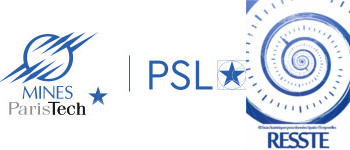Temperatures from opportunistic thermometers embedded in private cars for urban heat island estimation
1 : Centre national de recherches météorologiques
-
Site web
Météo France, Institut National des Sciences de l'Univers : UMR3589, Centre National de la Recherche Scientifique : UMR3589
2 : Laboratoire des Sciences du Climat et de lÉnvironnement [Gif-sur-Yvette]
Université de Versailles Saint-Quentin-en-Yvelines : UMR8212, Commissariat à l'énergie atomique et aux énergies alternatives : DRF/LSCE, Université Paris-Saclay, Institut National des Sciences de l'Univers : UMR8212, Centre National de la Recherche Scientifique : UMR8212
3 : CNRM
CNRM, Météo-France
4 : Institut de mathématiques
CNRS : UMR5219, Université Paul Sabatier - Toulouse III
toulouse -
France
5 : ENM
Météo France
Toulouse -
France
Cities are developing quickly and as a result, the urban heat island effect has become a major health issue for maintaining the thermal comfort of city dwellers. For this reason, city planners wish to have access to urban meteorological databases on local areas. With the growth of connected devices, it is possible to collect unusual but massive temperature readings from people's activities. In particular, we have access to temperatures measured by on-board thermometers in everyday personal cars. This new source of data requires new spatio-temporal tools to combine different sources of information of different qualities and spatial scales. Our recent work (see Marques et al, 2021) assessed the overall quality of such opportunistic data and showed that it is possible to accurately estimate the urban heat island at a resolution of 200 m. The cooling effect of the parks was detected in cities like Rennes and Paris. In Barcelona and Dijon, we also observed the impact of regional environments and the orographic effect on the urban heat island. To go further, we reframe our problem as hierarchical spatial model and discuss how to merge these opportunistic data with other data sources. The question of how to infer (assimilate) fine space structures from diverse and moving data sources will be touched upon.

 PDF version
PDF version
